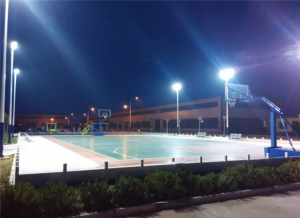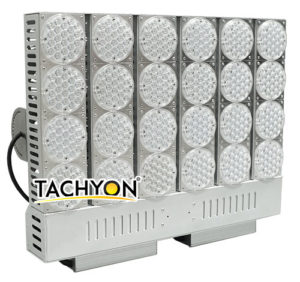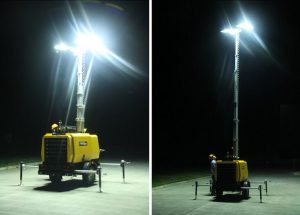Introduction to LED Overcurrent Protection
LED has distinct characteristics such as low power consumption, long life, and environmental protection. After penetrating from the small-size backlight application field to the large-size panel backlight, it is now further expanding to the general lighting application field. At present, it has developed rapidly in the fields of landscape, architecture, commerce, automobile and mobile lighting.
In the face of many application areas of LED lighting, since the market has not formed a unified standard, there are a variety of drive solutions. However, from the point of view of over-current protection, it can be roughly divided into two basic types according to the input current of the lamp body: DC input and grid AC input. The main difference between the two types is whether the drive power supply has an AC to DC module.
Of course, there are also many low-cost solutions on the market such as resistance, resistance-capacitance step-down, and no EMI rectification and constant current drive modules.
Purpose of LED overcurrent protection
There are three main purposes of LED lighting overcurrent protection:
First, the purpose of protecting personal and property safety. In general, protection devices are often added for this purpose in applications with high power input voltage.
Second, isolate the subsystem from the external system. If the external system is unstable, it will affect the safety of the subsystem.
On the other hand, if there is device damage in the subsystem, such as short-circuit failure mode of parallel devices, or the internal safe insulation level is damaged due to external factors, the internal circuit will be short circuited to ground. At this time, if there is no fuse action to isolate from the external system and no effective measures are taken in time, the insurance system of the external system will act.
This will cause the interruption of the whole power supply system, which will indirectly cause accidental losses in important places such as hospitals, and may even cause casualties. So sometimes it is necessary to add two fuses at the power input.
Third, protect important and valuable electronic components or devices. For LED lighting lamps, the cost of LED beads accounts for most of the cost of the whole lamp. In the circuit of non isolated power drive or non constant current drive, it is necessary to carry out necessary overcurrent protection for the output of the drive.
Differences of LED overcurrent protection devices
Due to the different structure of power input, there are great differences in the concerns of selecting overcurrent protection devices:
1. Selection of DC input fuse
For the selection of DC input type dcin fuse, special attention should be paid to the temperature reduction factor parameter of fuse. Due to the large heating capacity of high-power LED, the temperature inside the LED lamp cup is relatively high. If the fuse with large temperature reduction is selected, the specification with large current will be selected. Under the same working current, the protection ability of the fuse with large current specification is relatively reduced. In addition, at the position of dcin, capacitor filtering will be used at the back end, resulting in relatively large start-up pulse current.
Therefore, when selecting a fuse at this position, it is necessary to strictly consider the pulse conditions, otherwise the wrong option is easy to cause the fuse to be broken by the startup pulse. It is difficult to go through many on-off tests and surge current tests. It is recommended to use products with strong pulse resistance.
2. Fuse at drive output
For the fuse selection at the drive output, while paying attention to the fuse temperature reduction coefficient, it is also necessary to consider the fuse fusing speed index. Due to the small current fluctuation here, in case of circuit abnormality or component failure, it is necessary to quickly cut off the circuit to protect the LED light string at the back end. In this position, we recommend the selection of quick break type and temperature reduction fuse.
For the above two occasions, there are many SMD low-voltage fuses available in the general market. For example, the solidmatrix of AEM Technology ® Technical fuse, size from 0402 to 1206, current specification from 0.5 to 30A. There are many different series, different specifications and different characteristics of products for manufacturers to choose, such as fast break, fast break, high pulse resistance, slow break and so on.
3. Selection of AC input fuse
For the AcIn position of AC input LED lighting, especially LED bulb, it is necessary to consider not only the size of fuse, but also the withstand voltage value of fuse. However, at present, the fuse that can withstand a wide AC voltage range on the market is generally large, and there are few small volume fuses with patch, and the withstand voltage value can reach 250VAC. In view of this application dilemma, AEM Technology launched airmatrixtmaf2 series patch fuse.
The volume is only 6.1mm * 2.5mm * 2.2mm. The body is petite, but it can withstand 250VAC voltage. At the same time, it also has the advantages of high consistency, low internal resistance and high pulse resistance, which will bring you a new application experience.
Some engineers believe that the fuse can be broken regardless of whether it is used in the positive and negative poles or the neutral wire and the live wire can be broken in the event of overcurrent, and it can play a protective role. Here to share experience with fellow engineers. The fuse needs to be connected to a line that has a potential difference with the ground. The fuse used on the ground wire can also cut off the circuit, but there is still a potential difference between the entire lighting appliance and the ground after it is cut off.
Once the internal components are short-circuited, the circuit will be dangerous. Therefore, in some countries where the socket can be reversed, such as Germany or China, from a safety point of view, it is better to add a fuse to the LN of some LED lighting fixtures that can be reversed.



